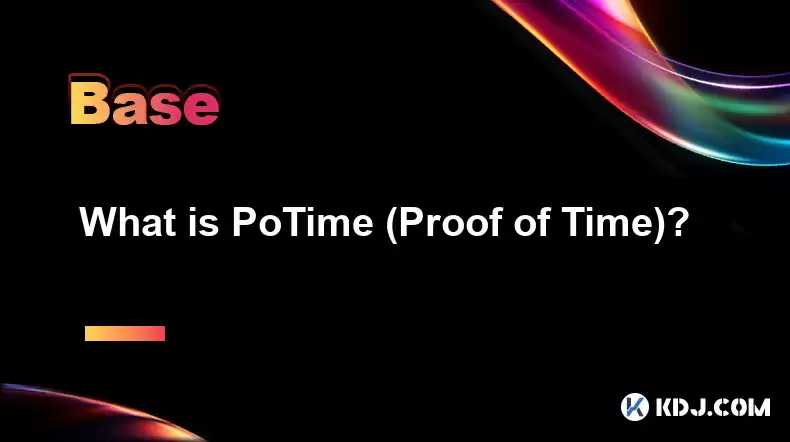-
 Bitcoin
Bitcoin $115100
1.27% -
 Ethereum
Ethereum $3675
2.71% -
 XRP
XRP $2.995
1.45% -
 Tether USDt
Tether USDt $1.000
0.02% -
 BNB
BNB $769.8
2.64% -
 Solana
Solana $168.0
3.25% -
 USDC
USDC $0.9999
-0.01% -
 TRON
TRON $0.3371
1.48% -
 Dogecoin
Dogecoin $0.2051
3.36% -
 Cardano
Cardano $0.7394
2.30% -
 Hyperliquid
Hyperliquid $38.15
0.42% -
 Stellar
Stellar $0.3966
-0.36% -
 Sui
Sui $3.486
2.93% -
 Chainlink
Chainlink $16.72
2.52% -
 Bitcoin Cash
Bitcoin Cash $568.0
4.36% -
 Hedera
Hedera $0.2440
2.59% -
 Ethena USDe
Ethena USDe $1.001
0.04% -
 Avalanche
Avalanche $22.16
2.06% -
 Litecoin
Litecoin $119.1
-0.73% -
 UNUS SED LEO
UNUS SED LEO $8.991
0.04% -
 Toncoin
Toncoin $3.232
-0.39% -
 Shiba Inu
Shiba Inu $0.00001233
2.82% -
 Uniswap
Uniswap $9.717
2.53% -
 Polkadot
Polkadot $3.664
1.85% -
 Dai
Dai $1.000
0.01% -
 Monero
Monero $281.2
-3.89% -
 Bitget Token
Bitget Token $4.350
1.55% -
 Cronos
Cronos $0.1428
5.07% -
 Pepe
Pepe $0.00001050
3.68% -
 Aave
Aave $262.3
3.54%
What is PoTime (Proof of Time)?
PoTime uses time as a resource to validate transactions, offering energy efficiency and fairness, but faces challenges like time manipulation and scalability.
Apr 07, 2025 at 05:36 pm

What is PoTime (Proof of Time)?
In the world of cryptocurrencies, various consensus mechanisms are employed to secure and validate transactions on blockchain networks. One of the more innovative and less commonly discussed mechanisms is Proof of Time (PoTime). This article delves into the intricacies of PoTime, exploring its concept, functionality, and its role within the cryptocurrency ecosystem.
h3: Understanding the Basics of PoTime
Proof of Time (PoTime) is a consensus mechanism that leverages the concept of time as a resource to validate transactions and secure the blockchain. Unlike more traditional mechanisms like Proof of Work (PoW) or Proof of Stake (PoS), which rely on computational power or the amount of cryptocurrency held, PoTime uses the passage of time as a verifiable and non-replicable resource. This approach aims to create a more energy-efficient and fair system for maintaining the integrity of the blockchain.
h3: How PoTime Works
The core principle behind PoTime is the idea that time cannot be manipulated or replicated. In a PoTime system, validators are chosen based on their ability to prove that a certain amount of time has passed. This is typically achieved through cryptographic means, where a validator must demonstrate that they have held a piece of data for a specified period. This process ensures that the validator has indeed spent the required time, thereby contributing to the security and validation of the blockchain.
To understand how this works in practice, consider the following steps involved in a PoTime system:
- Initialization: A validator receives a piece of data, often referred to as a "time token," which they must hold for a predetermined period.
- Time Locking: The validator uses cryptographic techniques to lock the time token, ensuring that it cannot be accessed or altered until the specified time has elapsed.
- Verification: Once the time has passed, the validator can unlock the time token and submit it to the network for verification. Other nodes on the network can then confirm that the time token has indeed been held for the required duration.
- Reward: Upon successful verification, the validator is rewarded for their contribution to the network's security and transaction validation.
h3: Advantages of PoTime
PoTime offers several advantages over other consensus mechanisms, particularly in terms of energy efficiency and fairness. Since it does not require intensive computational power like PoW, PoTime is significantly more energy-efficient. This makes it an attractive option for blockchain networks looking to reduce their environmental impact.
Additionally, PoTime promotes a more equitable system. In PoW, validators with more powerful hardware have a higher chance of validating transactions and earning rewards. In contrast, PoTime levels the playing field by making time the primary resource, which is equally available to all participants.
h3: Challenges and Limitations of PoTime
Despite its advantages, PoTime is not without its challenges and limitations. One of the primary concerns is the potential for time manipulation. While time itself cannot be altered, the cryptographic methods used to prove the passage of time can be vulnerable to attacks or manipulation. Ensuring the security and integrity of these cryptographic techniques is crucial for the success of PoTime.
Another challenge is the scalability of PoTime systems. As the number of validators increases, the time required to verify the passage of time can become a bottleneck, potentially slowing down the transaction validation process. Addressing these scalability issues is essential for the widespread adoption of PoTime.
h3: Real-World Applications of PoTime
PoTime has been implemented in several blockchain projects, each aiming to leverage its unique properties to enhance their network's security and efficiency. One notable example is the Chia Network, which uses a variant of PoTime called Proof of Space and Time. In this system, validators must prove that they have allocated a certain amount of storage space and held it for a specified period, combining the benefits of both space and time as resources.
Another project that utilizes PoTime is Filecoin, which employs a similar concept to secure its decentralized storage network. By requiring validators to prove the passage of time, Filecoin ensures that data stored on its network remains secure and verifiable.
h3: Comparing PoTime with Other Consensus Mechanisms
To better understand the role of PoTime within the broader cryptocurrency ecosystem, it is helpful to compare it with other consensus mechanisms. Proof of Work (PoW), used by networks like Bitcoin, relies on validators solving complex mathematical puzzles to validate transactions. This process is energy-intensive and can lead to centralization, as those with more powerful hardware have a competitive advantage.
Proof of Stake (PoS), on the other hand, selects validators based on the amount of cryptocurrency they hold and are willing to "stake" as collateral. While more energy-efficient than PoW, PoS can still lead to centralization, as those with more cryptocurrency have a higher chance of being chosen as validators.
PoTime stands out by using time as a resource, which is inherently more democratic and energy-efficient. However, it also faces unique challenges, such as ensuring the security of time-locking mechanisms and addressing scalability issues.
Frequently Asked Questions
Q: Can PoTime be used in conjunction with other consensus mechanisms?
A: Yes, PoTime can be combined with other consensus mechanisms to create hybrid systems that leverage the strengths of each. For example, a network might use PoTime for certain types of transactions while employing PoS for others, creating a more robust and flexible validation process.
Q: How does PoTime ensure the security of time-locking mechanisms?
A: PoTime relies on advanced cryptographic techniques to secure time-locking mechanisms. These techniques include zero-knowledge proofs and verifiable delay functions, which ensure that the time token cannot be accessed or altered until the specified time has elapsed.
Q: Are there any cryptocurrencies currently using PoTime as their primary consensus mechanism?
A: While PoTime is not as widely adopted as PoW or PoS, several projects incorporate elements of PoTime in their consensus mechanisms. Chia Network and Filecoin are notable examples that use variants of PoTime to secure their networks.
Q: How does PoTime impact the decentralization of a blockchain network?
A: PoTime can enhance decentralization by making time the primary resource for validation, which is equally available to all participants. This approach reduces the advantage of those with more powerful hardware or larger cryptocurrency holdings, promoting a more equitable distribution of validation responsibilities.
Disclaimer:info@kdj.com
The information provided is not trading advice. kdj.com does not assume any responsibility for any investments made based on the information provided in this article. Cryptocurrencies are highly volatile and it is highly recommended that you invest with caution after thorough research!
If you believe that the content used on this website infringes your copyright, please contact us immediately (info@kdj.com) and we will delete it promptly.
- Avalanche vs. Ruvi AI: Daily Sales Tell a Story of Crypto Disruption
- 2025-08-07 06:29:35
- DeSoc: The Crypto to Buy Now for a Decentralized Future (and Maybe 43x Gains!)
- 2025-08-07 06:50:16
- Arctic Pablo Coin: Riding the Meme Coin Wave with a Deflationary Twist
- 2025-08-07 07:18:13
- XRP Price Skyrocket? Decoding the Cryptocurrency's Next Move
- 2025-08-07 07:31:50
- Meme Coins in August 2025: Riding the Rally Wave
- 2025-08-07 06:56:08
- Big Whales, Altcoins, and Heavy Transactions: What's Moving the Crypto Market?
- 2025-08-07 06:29:35
Related knowledge

What is the difference between CeFi and DeFi?
Jul 22,2025 at 12:28am
Understanding CeFi and DeFiIn the world of cryptocurrency, CeFi (Centralized Finance) and DeFi (Decentralized Finance) represent two distinct financia...

How to qualify for potential crypto airdrops?
Jul 23,2025 at 06:49am
Understanding What Crypto Airdrops AreCrypto airdrops refer to the distribution of free tokens or coins to a large number of wallet addresses, often u...

What is a crypto "airdrop farmer"?
Jul 24,2025 at 10:22pm
Understanding the Role of a Crypto 'Airdrop Farmer'A crypto 'airdrop farmer' refers to an individual who actively participates in cryptocurrency airdr...

What is the difference between a sidechain and a Layer 2?
Jul 20,2025 at 11:35pm
Understanding the Concept of SidechainsA sidechain is a separate blockchain that runs parallel to the main blockchain, typically the mainnet of a cryp...

What is the Inter-Blockchain Communication Protocol (IBC)?
Jul 19,2025 at 10:43am
Understanding the Inter-Blockchain Communication Protocol (IBC)The Inter-Blockchain Communication Protocol (IBC) is a cross-chain communication protoc...

How does sharding improve scalability?
Jul 20,2025 at 01:21am
Understanding Sharding in BlockchainSharding is a database partitioning technique that is increasingly being adopted in blockchain technology to enhan...

What is the difference between CeFi and DeFi?
Jul 22,2025 at 12:28am
Understanding CeFi and DeFiIn the world of cryptocurrency, CeFi (Centralized Finance) and DeFi (Decentralized Finance) represent two distinct financia...

How to qualify for potential crypto airdrops?
Jul 23,2025 at 06:49am
Understanding What Crypto Airdrops AreCrypto airdrops refer to the distribution of free tokens or coins to a large number of wallet addresses, often u...

What is a crypto "airdrop farmer"?
Jul 24,2025 at 10:22pm
Understanding the Role of a Crypto 'Airdrop Farmer'A crypto 'airdrop farmer' refers to an individual who actively participates in cryptocurrency airdr...

What is the difference between a sidechain and a Layer 2?
Jul 20,2025 at 11:35pm
Understanding the Concept of SidechainsA sidechain is a separate blockchain that runs parallel to the main blockchain, typically the mainnet of a cryp...

What is the Inter-Blockchain Communication Protocol (IBC)?
Jul 19,2025 at 10:43am
Understanding the Inter-Blockchain Communication Protocol (IBC)The Inter-Blockchain Communication Protocol (IBC) is a cross-chain communication protoc...

How does sharding improve scalability?
Jul 20,2025 at 01:21am
Understanding Sharding in BlockchainSharding is a database partitioning technique that is increasingly being adopted in blockchain technology to enhan...
See all articles

























































































